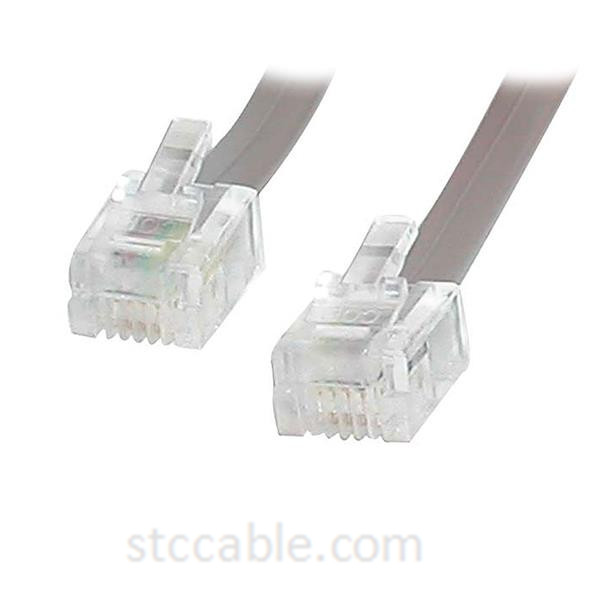What cable do you use for an RJ-11 telephone socket?
To connect to an RJ-11 telephone socket, you use an RJ-11 telephone cable. Here’s a breakdown of the types and uses of RJ-11 cables:
RJ-11 Cable
1. Connector Type:
RJ-11: This is a 6P4C (6-position, 4-contact) modular connector commonly used for telephone connections. It is typically smaller than Ethernet cables and is designed specifically for telephone lines.
2. Cable Description:
Wiring: RJ-11 cables can have 2, 4, or 6 wires, but for most basic telephone setups, they often use 2 or 4 wires.
Shielding: These cables are usually unshielded twisted pair (UTP) and are suitable for carrying analog telephone signals.
Common Uses
1. Connecting Phones: RJ-11 cables are used to connect telephones to wall sockets or to a telephone jack.
2. Modems and Fax Machines: They are also used to connect devices like dial-up modems or fax machines to telephone lines.
3. Home Telephone Systems: In home wiring setups, RJ-11 cables connect various telephone devices to a central telephone line or to a telephone network.
Cable Types
1. Straight-Through Cables: These are the most common and have the same wiring configuration on both ends. They are used for connecting telephones to wall sockets or jacks.
2. Crossover Cables: Less common for telephone connections, these have different wiring on each end and are used for special purposes like connecting two telephones directly.
Physical Appearance
1. Connector: The RJ-11 connector is smaller than an Ethernet connector (RJ-45) and typically has a plastic clip that locks it into place.
2. Cable: The cable itself is usually round and relatively thin compared to Ethernet cables. It is often available in various lengths.
How to Use?
1. Plugging In: Simply plug the RJ-11 connector into the RJ-11 telephone socket. The connector will click into place.
2. Connecting Devices: Connect the other end of the cable to your telephone or other telephone equipment.
Additional Considerations
1. Compatibility: Make sure you use an RJ-11 cable that matches the requirements of your telephone system. While RJ-11 is standard for most telephones, some older systems might use other types of connectors.
2. Quality: For better performance, especially in longer runs, consider using cables with higher quality shielding, though this is less critical for typical residential setups.
Send your message to us:
Post time: Jul-22-2024
